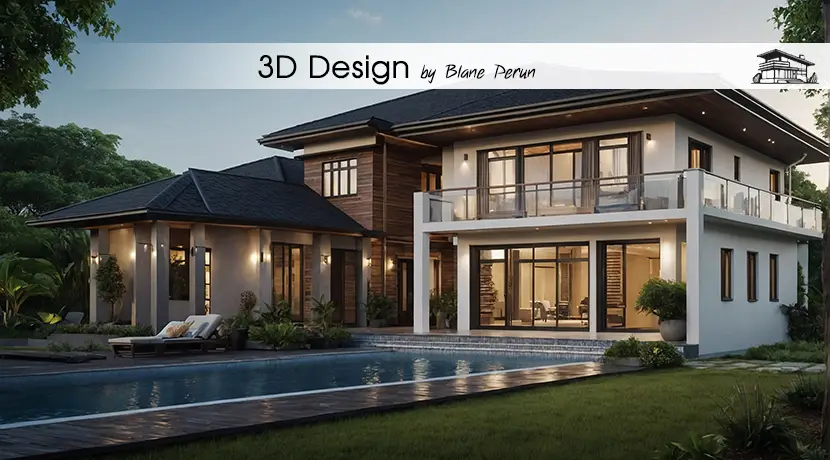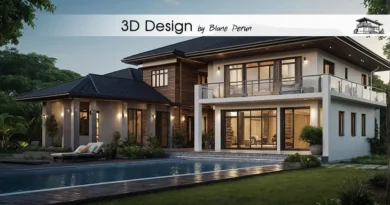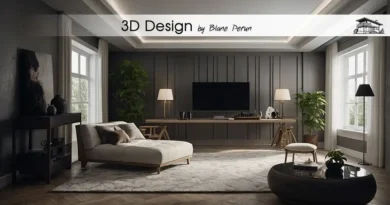3D Design
Unlocking the Potential of 3D Home Planning
In an era where customization and efficiency are paramount, 3D Home Planning stands out as a beacon for those looking to design or remodel their living spaces. This innovative approach leverages the power of three-dimensional technology to create detailed and immersive representations of homes, allowing for a level of precision and creativity previously unattainable with traditional two-dimensional blueprints. The essence of 3D Home Planning lies in its ability to bring ideas to life, providing a tangible vision of what a dream home can truly look like. As we delve deeper into this subject, we’ll explore the intricacies and benefits of adopting this technology in home design and renovation projects.

The Foundation of 3D Design
The Role of Software in 3D Home Planning
The advent of sophisticated software applications has been a game-changer in the realm of 3D Home Planning. These tools, equipped with features like drag-and-drop interfaces and extensive object libraries, enable users to construct detailed models of their homes. Users can experiment with different layouts, materials, and colors, making informed decisions based on the virtual representations. The software also allows for the integration of structural elements like beams and columns, ensuring that designs are not only aesthetically pleasing but also architecturally sound. The use of software in 3D Home Planning democratizes the design process, making it accessible to both professionals and enthusiasts alike.
Visualizing Spaces with Virtual Reality
Virtual Reality (VR) has taken 3D Home Planning to new heights, offering an immersive experience that transcends traditional design boundaries. Through VR, individuals can virtually walk through their designed spaces, gaining a profound understanding of spatial relationships and functionality. This firsthand experience is invaluable, as it provides insights that are often overlooked in flat designs. VR in 3D Home Planning also facilitates better communication between clients and designers, as both parties can explore and discuss the virtual space together, ensuring that the final outcome aligns with the client’s vision and expectations.
Advanced Techniques in 3D Modeling
Incorporating Environmental Factors
A crucial aspect of 3D Home Planning is considering the interaction between the designed space and its surrounding environment. Advanced 3D modeling techniques allow for the simulation of natural lighting, shadows, and even climatic conditions. This enables designers to optimize the home’s orientation, window placements, and outdoor spaces, enhancing energy efficiency and comfort. By simulating different times of the day and year, homeowners can make informed decisions that contribute to sustainable living and reduced energy costs.
Customization and Detailing
Customization lies at the heart of 3D Home Planning, with the ability to tailor every aspect of the home to suit individual preferences and needs. Detailed 3D models can include bespoke furniture designs, intricate architectural details, and personalized decor elements. This level of customization ensures that the final build is a true reflection of the homeowner’s personality and lifestyle. Additionally, the detailed models assist contractors and builders in understanding the project’s scope and complexities, leading to more accurate cost estimations and streamlined construction processes.
Navigating Challenges in 3D Home Planning
Overcoming Technical Hurdles
Despite its many advantages, 3D Home Planning is not without its challenges. The technical nature of 3D modeling software can be daunting for beginners, requiring a certain level of proficiency to fully exploit its capabilities. Furthermore, the accuracy of a 3D model heavily relies on the input data, making it crucial for users to have a clear understanding of architectural principles and construction standards. Overcoming these hurdles often involves investing time in learning and practicing, or seeking assistance from professionals who specialize in 3D modeling and design.
Balancing Creativity and Practicality
While 3D Home Planning opens up a world of creative possibilities, it also necessitates a careful balance between innovation and feasibility. It’s easy to get carried away with the aesthetic aspects of design, but practical considerations such as budget constraints, building codes, and structural integrity must not be overlooked. Successful 3D Home Planning involves harmonizing the creative vision with practical realities, ensuring that the dream home is not only beautiful but also livable and sustainable.
In conclusion, 3D Home Planning is revolutionizing the way we approach home design and construction. By harnessing the power of advanced technologies, it offers unparalleled precision, creativity, and flexibility in creating living spaces that truly resonate with their inhabitants. As we continue to explore and refine this approach, the future of home planning looks more vibrant and promising than ever.

FAQs on 3D Home Planning
What is 3D Home Planning?
3D Home Planning involves using three-dimensional technology to design and visualize homes before they are built or renovated. It allows for detailed and immersive representations, enabling better decision-making in the design process.
How does Virtual Reality enhance 3D Home Planning?
Virtual Reality (VR) enhances 3D Home Planning by providing an immersive experience where individuals can virtually walk through their designed spaces. This helps in understanding spatial relationships better and ensures that the design aligns with the homeowner’s expectations, facilitating more effective communication between clients and designers.
Can 3D Home Planning help in reducing construction costs?
Yes, 3D Home Planning can significantly reduce construction costs by allowing for thorough pre-construction planning, which minimizes the risk of costly changes and errors during the actual construction phase. Detailed 3D models enable accurate cost estimations and help in identifying potential issues before they become expensive problems.
How can I start with 3D Home Planning if I have no experience?
For beginners, the best way to start with 3D Home Planning is to explore user-friendly software with intuitive interfaces designed for non-professionals. Many platforms offer tutorials and support communities to help novices learn the basics. Additionally, considering a consultation with a professional 3D designer could provide valuable insights and guidance.
Is 3D Home Planning environmentally friendly?
3D Home Planning can be environmentally friendly, as it allows for the optimization of natural resources and energy efficiency in home design. By simulating environmental factors and integrating sustainable design principles, homes can be made more eco-friendly, reducing their carbon footprint and operational costs.
What are the limitations of 3D Home Planning?
While 3D Home Planning offers numerous benefits, it does have limitations, such as the need for technical proficiency in 3D modeling software and the potential for a disconnect between virtual designs and real-world feasibility. Ensuring that 3D designs are practical and comply with all relevant building regulations and codes is essential to successfully translate them into tangible structures.





